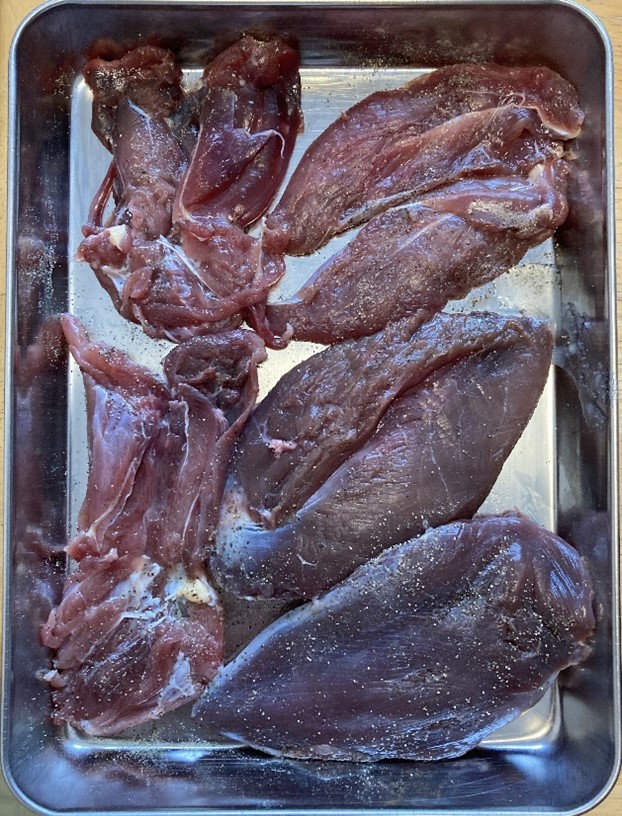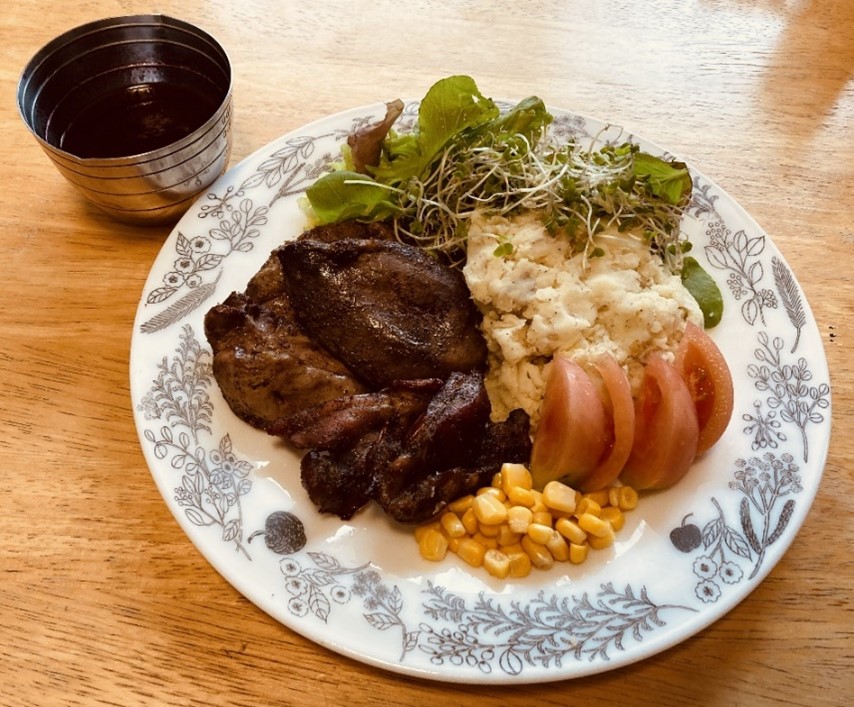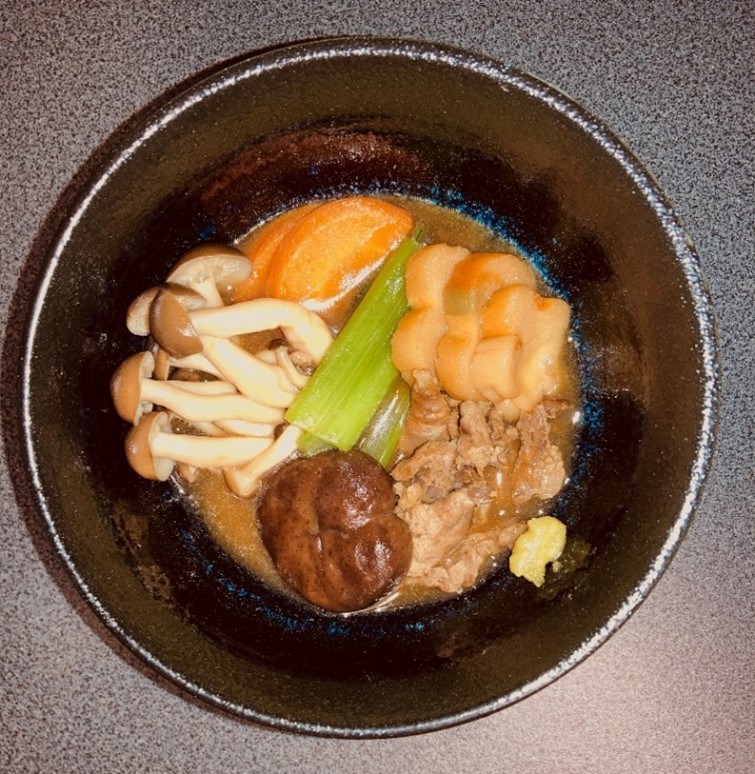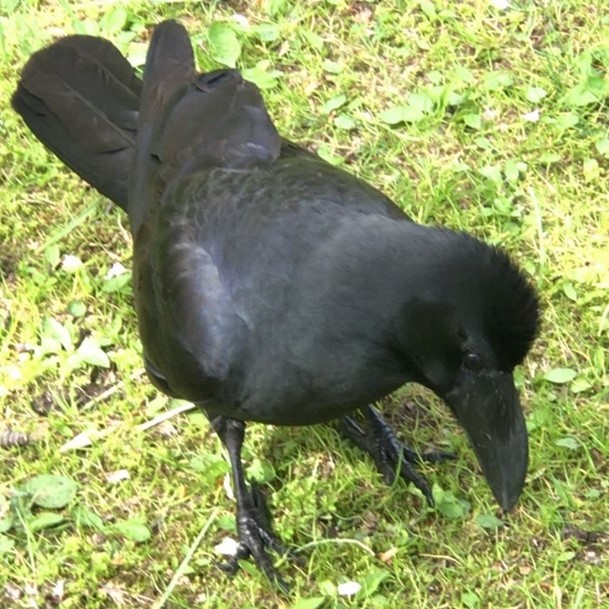10.7.2024
When I talk about bird bones excavated from archaeological sites, people often ask, "Have you ever eaten crow?" “What does pigeon taste like?”, or “Does shorebird meat taste good?”. To answer these questions, and more importantly to collect skeletal specimens for identification of bones excavated from archaeological sites, I have eaten several types of birds. Here's how good they taste and my recommendations on how to eat them.
Note that the birds we have eaten are game birds (many of which were hunted to prevent agricultural damage) purchased from legitimate suppliers. We did not do anything illegal to make specimens.
First, we have the large-billed crow. I have researched whether crows taste good or not, and it seems to be a hit or miss depending on what the crows were eating. But I wanted to know the original taste even if it was bad, so I cut the meat into thin slices, seasoned it with only salt and pepper, and grilled it. It tasted more like deer meat than chicken, probably because it was lean, even though it was breast meat. It did not smell particularly trashy, and apparently, I had hit on a delicious one.
The one I cooked most carefully was a willow ptarmigan. It was so cute that I thought it would be a shame not to make it tasty. Since it was from Scotland, I looked up how to eat it on a British recipe site, and after roasting the meat in the oven, I served it with a red wine sauce. The meat was delicious with a hint of wood flavor.
Along with the ptarmigan, I also bought a chukar and a grey partridge. Since they are all members of the pheasant family like chickens, I treated them as chicken and made them into fried chicken and three-cups (Taiwanese-style basil stir-fry). It tastes indeed like chicken but had a subtle wild flavor. By the way, the trade name of the imported game bird was in French, which I am not familiar with, and the species name was determined by DNA analysis. I have also eaten meat of a bred green pheasant. It is as close as possible to chicken and can be cooked as Mizutaki (hot pot simply cooked from Dashi and water).
As for pigeon, someone said it is similar to liver, so I made imported wood pigeon as Rebanira (stir-fried pork liver ang garlic chives, but in this case, pigeon and garlic chives). It still had an indescribable smell (if I may say so, the smell of neglected laundry). However, when I dipped the pigeons in Genghis Khan sauce and cooked them as Tatsuta-fries, they were delicious. Pigeons may also be hit or miss.
I have also eaten meat of several species of ducks. I don't know the difference in taste between them. What I did find out is that if you want the taste of a restaurant, you should remove the blood properly. Washing the meat in salted water improves it. In addition to the standard Duck Nanban (hot soba noodle with ducks), Duck Seiro (chilled soba noodles with duck), and duck pot, the pasta with basil sauce was also good. The most time-consuming dish was Jibu-ni (duck meat stew).
The brown-eared bulbul and the Eurasian woodcock were grilled with herbs. The Woodcock had no peculiar taste and was especially easy to eat. It is indeed the king of wild game. I also think it may be because my skill in removing blood from the meat has improved so much by this time.
The only ones I have eaten so far are those mentioned above. Skeletal specimens are also beautifully finished and used daily. If I had to choose which one is the best, I would choose the willow ptarmigan for its special flavor, or the woodcock for its delicious meat. But I still prefer the taste of chicken, goose, and duck. Domestication is a great process.
Note that the birds we have eaten are game birds (many of which were hunted to prevent agricultural damage) purchased from legitimate suppliers. We did not do anything illegal to make specimens.
First, we have the large-billed crow. I have researched whether crows taste good or not, and it seems to be a hit or miss depending on what the crows were eating. But I wanted to know the original taste even if it was bad, so I cut the meat into thin slices, seasoned it with only salt and pepper, and grilled it. It tasted more like deer meat than chicken, probably because it was lean, even though it was breast meat. It did not smell particularly trashy, and apparently, I had hit on a delicious one.
The one I cooked most carefully was a willow ptarmigan. It was so cute that I thought it would be a shame not to make it tasty. Since it was from Scotland, I looked up how to eat it on a British recipe site, and after roasting the meat in the oven, I served it with a red wine sauce. The meat was delicious with a hint of wood flavor.
Along with the ptarmigan, I also bought a chukar and a grey partridge. Since they are all members of the pheasant family like chickens, I treated them as chicken and made them into fried chicken and three-cups (Taiwanese-style basil stir-fry). It tastes indeed like chicken but had a subtle wild flavor. By the way, the trade name of the imported game bird was in French, which I am not familiar with, and the species name was determined by DNA analysis. I have also eaten meat of a bred green pheasant. It is as close as possible to chicken and can be cooked as Mizutaki (hot pot simply cooked from Dashi and water).
As for pigeon, someone said it is similar to liver, so I made imported wood pigeon as Rebanira (stir-fried pork liver ang garlic chives, but in this case, pigeon and garlic chives). It still had an indescribable smell (if I may say so, the smell of neglected laundry). However, when I dipped the pigeons in Genghis Khan sauce and cooked them as Tatsuta-fries, they were delicious. Pigeons may also be hit or miss.
I have also eaten meat of several species of ducks. I don't know the difference in taste between them. What I did find out is that if you want the taste of a restaurant, you should remove the blood properly. Washing the meat in salted water improves it. In addition to the standard Duck Nanban (hot soba noodle with ducks), Duck Seiro (chilled soba noodles with duck), and duck pot, the pasta with basil sauce was also good. The most time-consuming dish was Jibu-ni (duck meat stew).
The brown-eared bulbul and the Eurasian woodcock were grilled with herbs. The Woodcock had no peculiar taste and was especially easy to eat. It is indeed the king of wild game. I also think it may be because my skill in removing blood from the meat has improved so much by this time.
The only ones I have eaten so far are those mentioned above. Skeletal specimens are also beautifully finished and used daily. If I had to choose which one is the best, I would choose the willow ptarmigan for its special flavor, or the woodcock for its delicious meat. But I still prefer the taste of chicken, goose, and duck. Domestication is a great process.

Willow ptarmigan meat

Roasted willow ptarmigan with red wine sauce

Jibuni (duck stew)
About the author
Kai-hsuan Hsu
Profile
Born in Hsinchu City, Taiwan. Awarded PhD. from the Graduate School of Letters, Hokkaido University. Currently works as Specially Appointed Assistant Professor at the Hokkaido University Museum.
Field of research
I am studying bird bones excavated from archaeological sites. My main research theme has been the use of chickens in the Edo period (1603-1868), but recently I have been finding it interesting to study birds that are not tasty.
Major Achievements
Researchmap
Field of research
I am studying bird bones excavated from archaeological sites. My main research theme has been the use of chickens in the Edo period (1603-1868), but recently I have been finding it interesting to study birds that are not tasty.
Major Achievements
Researchmap

